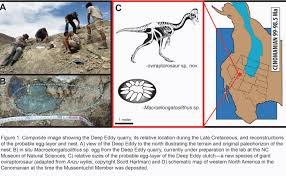
The Importance of Dinosaur Eggs in Paleontology
Dinosaur eggs provide invaluable insights into the reproductive biology and developmental processes of these ancient creatures. While many aspects of dinosaurs remain shrouded in mystery, the study of their eggs has opened windows into their lives, behaviours, and the environments they inhabited. Understanding dinosaur reproduction not only enhances our knowledge of these magnificent reptiles but also aids in the study of evolution and extinction patterns.
Recent Discoveries in Dinosaur Eggs
A series of significant discoveries has recently emerged from various parts of the globe, particularly in Argentina and Mongolia, where fossilised dinosaur eggs have been unearthed in remarkable conditions. In Argentina, paleontologists have identified a nest with dozens of eggs, some even containing well-preserved embryos. This find suggests that these dinosaurs engaged in complex nesting behaviours, similar to modern bird reproductive practices.
Moreover, a unique discovery in Mongolia revealed the presence of oviraptor eggs dating back around 80 million years. The preserved state of these eggs allows researchers to closely study the embryos, providing vital information about their developmental stages. These embryos exhibit features that suggest advanced growth at the time of their death, hinting at the adaptability of species during the late Cretaceous period.
Technological Advancements in Egg Analysis
Advancements in imaging technology have significantly enhanced the analysis of fossilised eggs. Techniques such as high-resolution X-ray computed tomography allow scientists to peer inside the eggs without causing any damage. This non-invasive method not only reveals structural details but also facilitates the examination of the contents of the eggs, including potential soft tissue remnants.
The Significance of Dinosaur Egg Research
The continuing study of dinosaur eggs is critical for understanding the life cycles of these prehistoric creatures. Insights gained from these findings can inform theories regarding parental care, nesting locations, and even the evolutionary history of birds, which are considered modern-day descendants of certain theropod dinosaurs. Additionally, as climate change and human activity threaten contemporary species, understanding historical patterns of survival and adaptation becomes increasingly vital.
Conclusion
The ongoing research into dinosaur eggs not only unravels the mysteries of the past but also helps scientists draw connections to present-day ecological issues. With new discoveries and technological advancements, future findings may change our perspectives on dinosaurs and lead to a deeper understanding of life’s evolution on Earth. As paleontologists continue to explore the far reaches of excavation sites, the story of dinosaurs and their eggs is far from over, promising more revelations that will captivate scientists and enthusiasts alike.
You may also like

Exploring the Unique World of Laos Hornets

The Life and Legacy of David Attenborough
